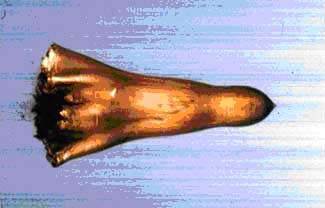 The Air Force Research Lab is studying how objects fly at hypersonic speeds at sea level, a capability that could eventually lead to new warhead technologies. “We already have things in place with people who are doing the warhead work, so it’s not something that we ‘hope’ to use someday, it is something that the warhead designers … have already given me problems to work on,” said Kirk Vanden, technical advisor for AFRL’s Munitions Directorate computational mechanics branch. The Vanden team’s work centers on examining penetrator warhead flows at speeds around Mach 6 and involves “an exciting new application of nontraditional hypersonic computational analysis,” said John Schmisseur, Air Force Office of Scientific Research program manager overseeing hypersonics grants. AFOSR is funding Vanden’s work.
The Air Force Research Lab is studying how objects fly at hypersonic speeds at sea level, a capability that could eventually lead to new warhead technologies. “We already have things in place with people who are doing the warhead work, so it’s not something that we ‘hope’ to use someday, it is something that the warhead designers … have already given me problems to work on,” said Kirk Vanden, technical advisor for AFRL’s Munitions Directorate computational mechanics branch. The Vanden team’s work centers on examining penetrator warhead flows at speeds around Mach 6 and involves “an exciting new application of nontraditional hypersonic computational analysis,” said John Schmisseur, Air Force Office of Scientific Research program manager overseeing hypersonics grants. AFOSR is funding Vanden’s work.
A new White House new executive order, “Ensuring American Space Superiority,” emphasizes space security as a high priority for President Donald Trump and underlines the Space Force’s role in not only defending U.S. assets, but also in the attack mission.

